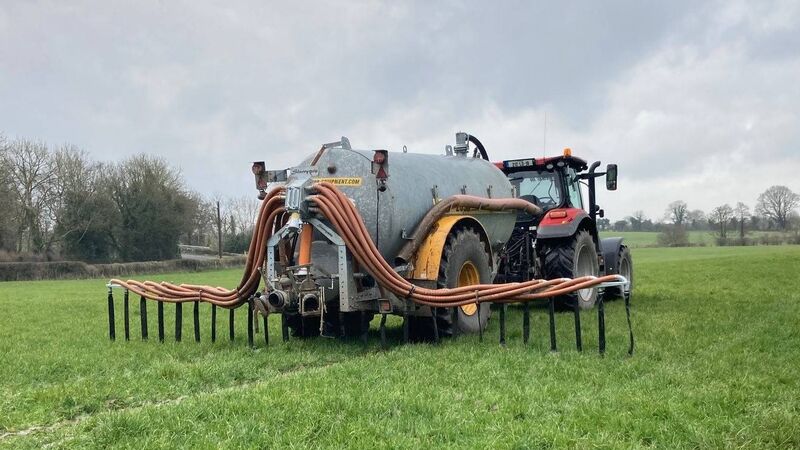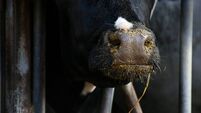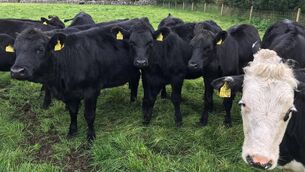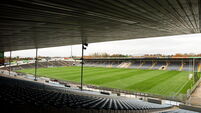Learning about slurry acidification from the Danes

In Ireland, Low Emission Slurry Spreading (LESS) is the main method to reduce ammonia emissions.
Teagasc researchers have revealed "very good" reduction of ammonia and greenhouse gas emissions from using acidifiers in slurry.
All EU countries are trying to reduce ammonia emissions, to reach 2020 and 2030 targets set by the Clean Air agreement.
In Ireland, Low Emission Slurry Spreading (LESS) is the main method to reduce ammonia emissions. There is a target to have 90% of slurry spread by LESS by 2027.
However, slurry acidification is used in Denmark for 20% of all slurry. Sulphuric acid is used to reduce ammonia emissions.

According to Teagasc, slurry acidification uses hazardous materials, and needs careful consideration and specialist installation, in order to adhere to health and safety standards.
Slurry storage and land spreading are important sources of ammonia, methane, and nitrous oxide. In Denmark, they result in 79% of ammonia. Additionally, storage produces 10.6% of agricultural emissions, with a further 4% from land spreading.
The slurry storage period is nine months in Denmark, and regulations require high levels of nitrogen efficiency from slurry, making it essential to avoid loss of ammoniacal nitrogen.
Therefore, acidification is a useful option, and it is one of several technologies used which, together, have reduced Danish ammonia emissions by 40%, from 1980 to 2015.
However, acidification has hardly been used in other EU countries. The main reasons for this are the cost level, local regulations, uncertainty about safety, and potentially unwanted side effects such as increased phosphorus mobility in soils and surplus sulphur fertilisation.
Acidification in the shed reduces the ammonia emission all the way up to landspreading, and it is used on more than 100 farms in Denmark, which are half pig and half dairy farms.
The first acidified slurry tanks are now more than ten years old, and the problems of possible erosion of concrete, which were feared, have been very limited. However, the long-term impact of acidified slurry on the soil must be evaluated.
Danish findings indicate that acidified (under 20-30%) slurry can improve biogas production, but reduces gas production when the concentration is over 30%. Using the solid fraction after separation of acidified slurry seems to boost biogas production significantly (over 30%) compared to plain slurry.
These are important considerations in Denmark, where 25% of manure from the country's farms goes through biogas plants.
Biogas started as a way of minimising landspreading of slurry which was polluting water courses, and it is planned to ban land spreading of raw slurry from 2035.
In Denmark, total costs of acidification per livestock unit range from €107 per year for farms with 200 livestock units down to €50 for farms with 500 LUs.
Higher nitrogen utilisation due to acidification is estimated to increase crop yield (grain) by 100 to 150 kg per ha.
In Denmark, using acidification can reduce ammonia emission so much that other alternatives need not to be used. Dairy farmers can avoid using slurry injection, if they use acidification.
Since 2019 in Denmark, slurry must be applied by injection to grassland and bare soils. Alternatively, acidified slurry may be applied with trailed hoses to grassland. But on bare soil, acidified slurry must still be injected.
Equipment for applying sulphuric acid during slurry spreading in the field is found on more than 50 farms, and has also been sold to machinery contractors operating on many farms. The SyreN system sold by Biocover can compete economically with slurry injection costs.
The latest SyreN system has "traffic signals" in the tractor, which display emissions measurements when spreading slurry, and indicate whenever ammonia levels are unacceptably high. The acidity of the slurry can be adjusted to regulate ammonia emissions.
In their latest machines, Biocover uses a data base of more than 10,000 ammonia emission measurements collated over 20 years to identify nitrogen loss during slurry spreading, and warn the tractor driver. By recording nitrogen output in slurry, the system advises on how much commercial fertilisers are needed along with the slurry.
Biocover says this system can be applied to all types of slurry spreaders, calculating nutrient utilisation efficiency and estimating ammonia emission on the go.












